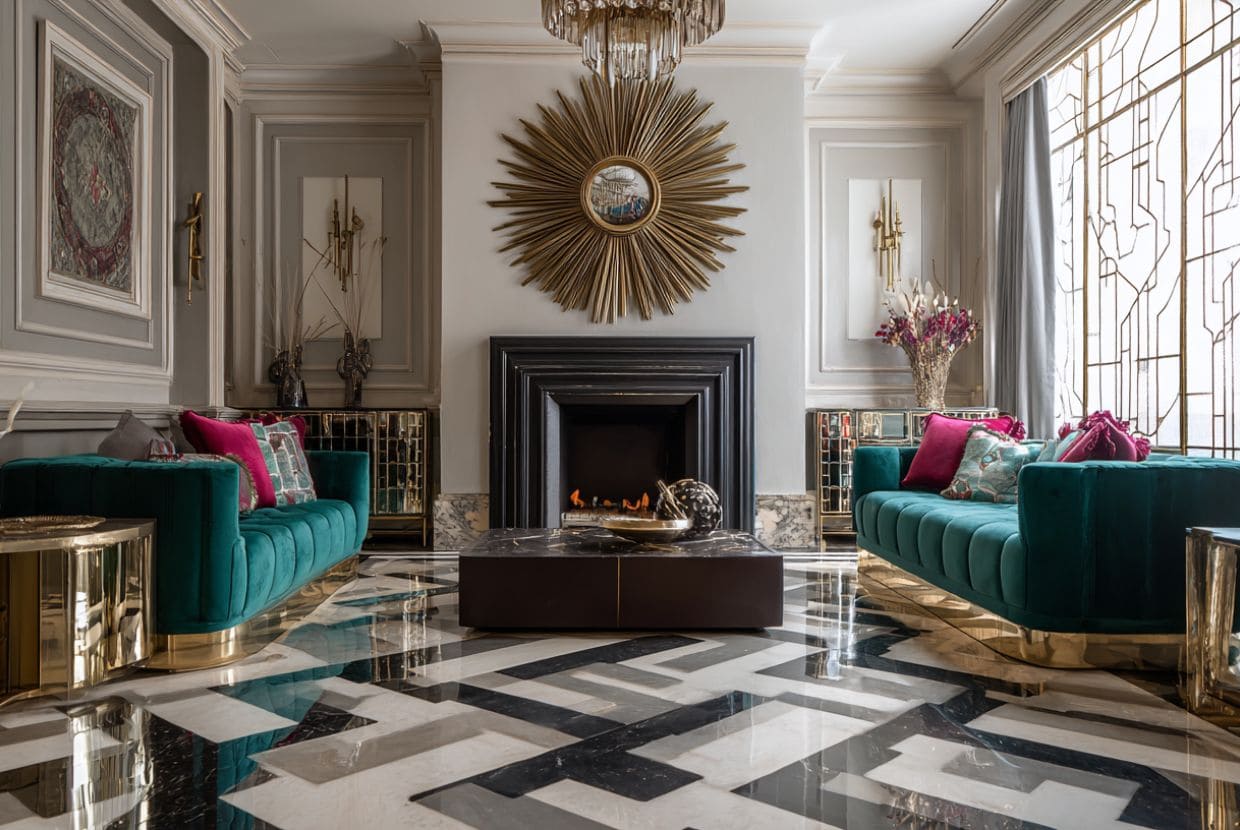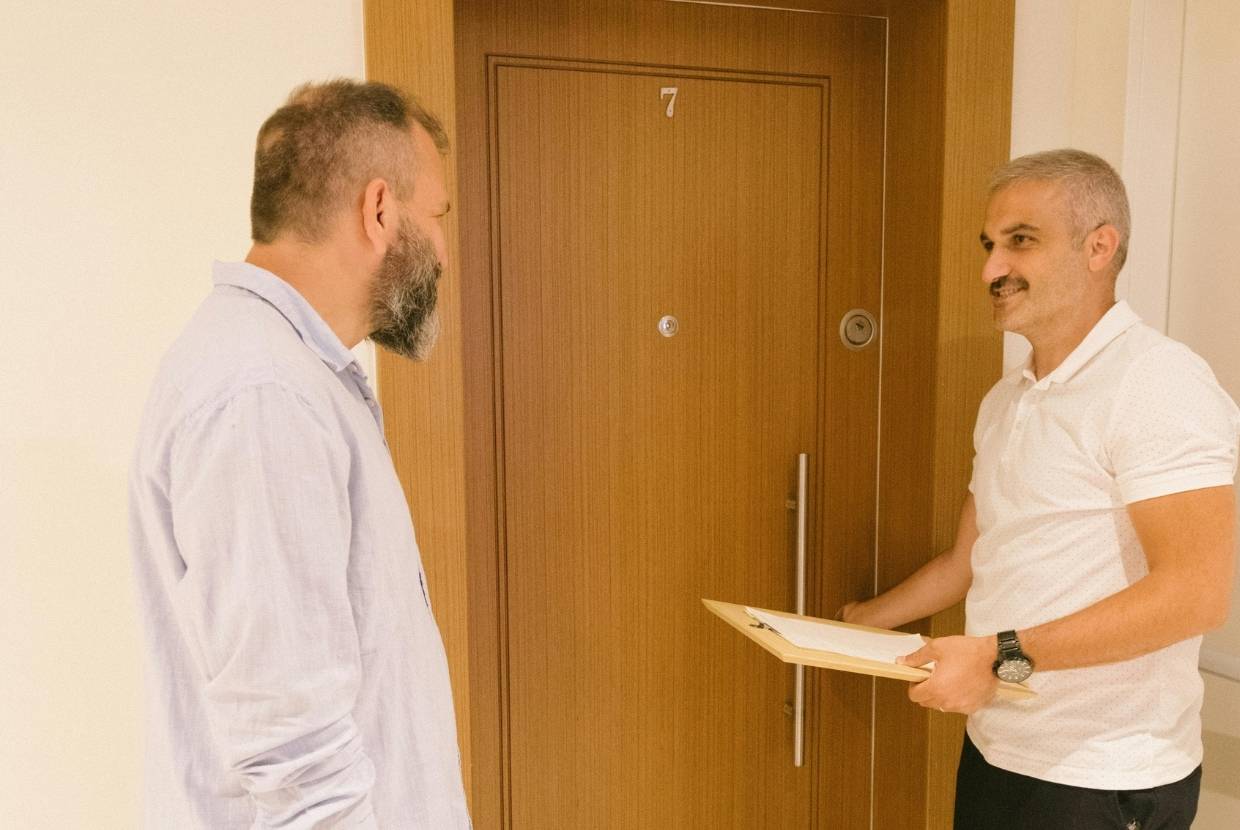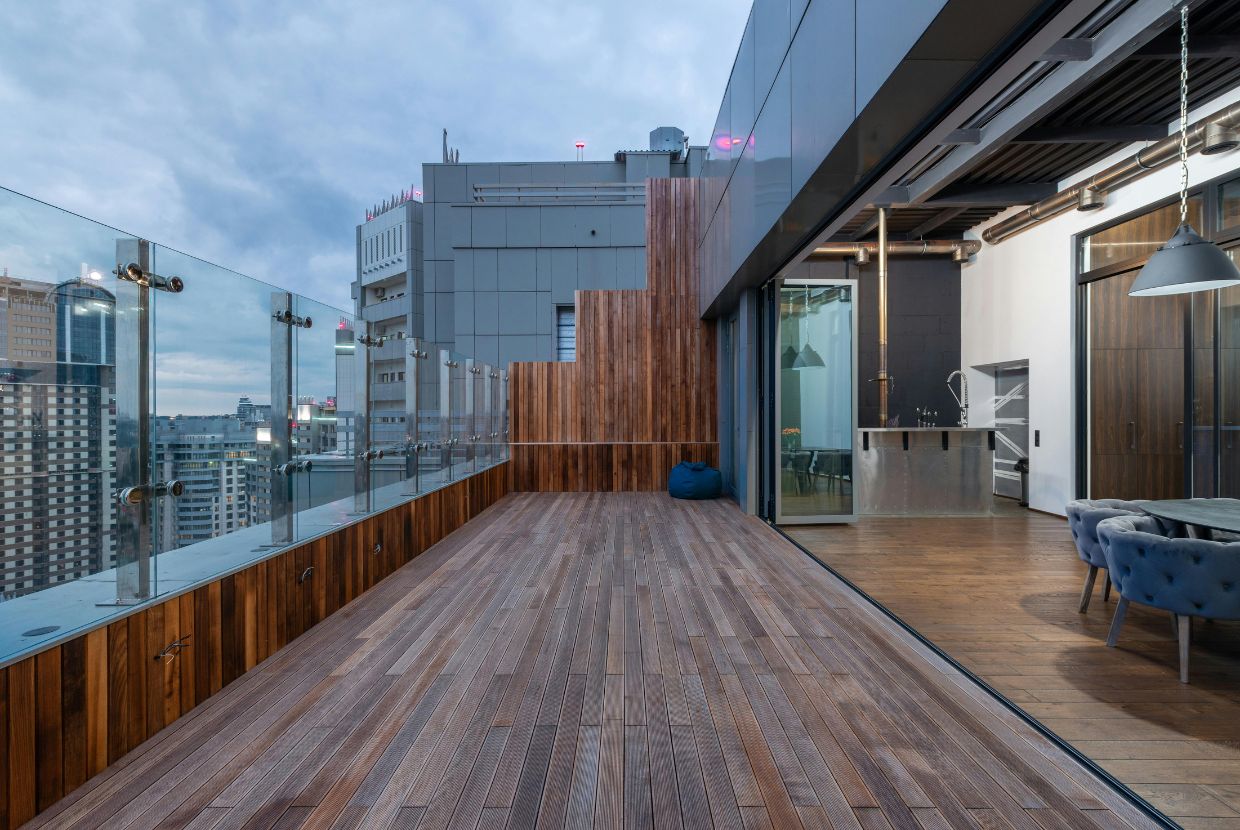The Art Deco style hasn't gone out of style. In fact, it's managed to make its way—strongly—into the 21st century. Although it was born a century ago, it still speaks a language we understand well: that of design that combines elegance, precise geometry, and a touch of daring.
Today we see it reappearing in interiors, facades, objects, and even in the imagery of brands seeking something different, with personality. And it's no coincidence. It has that balance between structure and beauty, between nostalgia and modernity, that makes it irresistible.
A style with history… and a lot of character
It all began in Paris, back in 1925, when it was officially presented at the International Exhibition of Modern Decorative and Industrial Arts. Art Deco left behind the curves of Art Nouveau and embraced straight lines, defined volumes, and symmetry.
But beware, it wasn't just form: there was substance. Influences from Cubism, Futurism, Russian Constructivism... and also from ancient cultures like Egypt and Mesoamerican civilizations. And, of course, the fascination with speed, machines, and that air of progress from the early 20th century.
The materials spoke for themselves: marble, chrome, fine woods, steel, ivory... Everything was carefully thought out. And that meticulous design style still garners a lot of attention today.
A new Deco, more conscious and sensorial
The interesting thing is that today's Art Deco doesn't seek to copy the past literally. Today, it reinterprets itself. It maintains its forms—those striking geometries—but changes the materials and adapts to more sustainable and human sensibilities.
Certified wood, artisanal ceramics, recycled metals, fabrics with natural dyes... All of this is coming into play. It's not about replicating, but rather understanding the spirit of Deco and translating it with new tools.
A good example is The Fitzroy, in New York. It has a green terracotta facade and copper woodwork that evokes the glamour of another era without sacrificing contemporary appeal. There's also 111 West 57th Street, a skyscraper that reinterprets the style's verticality and ornamentation with today's technology.
And the same goes for interiors: fluting, stepped moldings, metallic finishes, mirrors... everything is still there, but used with more care. Without going overboard.
Colors with memory and freshness
The Art Deco style has always had a strong connection to color. Black and white, metallics, pastels, jewel tones… It was a palette that played with surprise without losing elegance.
Today, that foundation remains, but it's richer. The contrasts are more pronounced, the tones more intense or deeper. And, as always, the finishes are very important.
Examples? Here are some that work wonders:
- Emerald green with brushed brass and walnut: conveys calm, yet with style.
- Piano black, ivory and gold: theatrical and sophisticated, ideal for spaces that want to say something.
- Petrol blue with veined marble and chrome accents: modern, fresh, but with substance.
- Burgundy or magenta with glossy lacquer and satin nickel: perfect for evening settings with personality.
The difference today is in the nuances: more matte, more touch, less garish shine.
Architecture and the city: Deco also lives on the streets
It's not just a matter of interiors. Art Deco lives on in many cities that are rediscovering their last-century architecture. And they're doing it well: without erasing, without disguising, but rather integrating the new with the old.
In Miami Beach, for example, the Deco district is almost sacred. The facades are carefully maintained, the pastel colors are respected, and this has become part of its cultural and tourist identity.
In Shanghai, the renovation of the Rockbund has brought 1920s buildings back to life. And in Cairo, the iconic Immobilia building has been revived as a residential complex, retaining none of its original style.
Interior design in Mallorca with a Deco perspective
In residential, commercial, and hotel projects, the Art Deco style is synonymous with character. At Tecnic Project, we approach it this way: not as a passing trend, but as a way of designing with history and intention.
The secret lies in finding the right balance. It's not about filling a space with references, but rather choosing a few—very carefully chosen—and letting them breathe. A chevron pattern here, a light fixture with a ribbed shade there, a touch of brass where you least expect it...
In the hospitality industry, this approach shines especially brightly. Hotels in Paris, Dubai, and New York are doing it brilliantly: marble, velvet, polished metals... everything is carefully designed to create enveloping atmospheres.
If you want to bring Art Deco into your space…
Here are some simple tips—no magic recipes—to make it really work:
- Use graphic patterns with intention: sunbursts, chevrons, straight frets.
- Choose noble materials, but don't overdo the shine. Satin finishes look great.
- Work with powerful neutrals (graphite, ivory, anthracite) and bring them to life with pops of bold color.
- Consider your lighting carefully: brass sconces, frosted glass, designer lamps. Light counts for a lot.
- And, above all, don't overload: it's better to have fewer elements, but ones that say something.
Art Deco also seduces in branding
This revival has reached beyond spatial design. Today we see it in fashion, jewelry, and premium gastronomy brands that are committed to a clear, elegant, and structured visual identity.
Geometric fonts, orderly gradients, decorative frames, vertical compositions... all of this draws directly from Art Deco. And not just on paper: it's also being seen digitally, especially on websites and apps that aim to convey exclusivity without being pretentious.
Why does it still work so well?
Perhaps because it has an aesthetic that never fades. Art Deco is easy to recognize, yet flexible enough to adapt to changing times. It has deep roots and, at the same time, room to grow. That combination is rare.
Tecnic Project: interior design in Mallorca with a Deco soul
At Tecnic Project, we're passionate about design that has something to say. And the Art Deco style has a lot to offer. It's not just a matter of beautiful shapes: it's a way of experiencing spaces, of giving them identity.
If you are looking for a project of interior design in MallorcaWith elegance, strength, and balance, perhaps this style is just what you need. We can help you shape it, respecting its essence and adapting it to your daily life.
Shall we talk about it?




